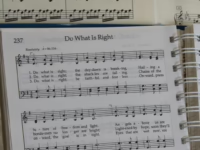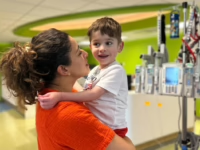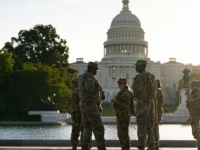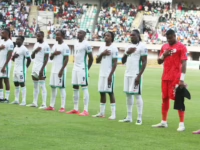When Israel launched its offensive on October 7, 2023, nearly everyone in Gaza sensed the impending severity of the assault.
However, few anticipated that this relentless violence would stretch on for nearly two years, nor did many believe the international community would permit such prolonged devastation.
At 16, I experienced the 2014 Israeli attack on Gaza, which lasted 51 days and felt interminable at the time. In hindsight, that conflict seems like a fleeting moment compared to what has unfolded since.
I cannot pinpoint the exact moment when hope for an end to this genocidal campaign vanished. Was it during the massacre at al-Ahli Hospital, the invasion of al-Shifa Hospital, my first forced displacement to Rafah, the destruction of Rafah itself, the obliteration of northern Gaza, the breach of ceasefire agreements, or the onset of famine?
Last year, on the genocide’s first anniversary, we found ourselves on the move again. The Israeli military issued a new gaza-kills-90-palestinians/” title=”Devastation in …: Over 90 Palestinians Killed as Israeli Bombing Ravages …”>forced evacuation order for eastern Khan Younis, compelling thousands, including my family, to flee to al-Mawasi.
This year, our displacement has been limited; we remain in a tent in al-Mawasi, enduring hunger and uncertainty.
The cycle of death and ruin continues, but with intensified cruelty. The casualty toll has risen, suffering has deepened, and Israeli tactics of inflicting pain have become increasingly varied.
Israel’s intent has evolved beyond mere killing; they have engineered diverse methods of destruction, forcing us to confront grim choices in how we perish.
When Israel cut off all humanitarian aid to Gaza on March 2, triggering a new wave of starvation amid ongoing civilian massacres, I believed that was the peak of malevolence. I was mistaken. Starvation was only the beginning.
By late May, the so-called Gaza Humanitarian Foundation established food distribution centers where Palestinians were subjected to brutal “hunger games,” competing for scarce food supplies under the threat of gunfire from Israeli soldiers and foreign mercenaries.
As children succumbed to malnutrition, Israel permitted commercial trucks to enter Gaza, filling markets with food that remained unaffordable to the starving population.
During the Israeli push to capture Gaza City, the military deployed explosive robots designed to demolish entire neighborhoods, annihilating families and homes alike.
T. S. Eliot once observed, “Humankind cannot bear very much reality.” Yet, the people of Gaza have been forced to endure an unbearable existence every single day for two years.
The horrors have been relentless. Israel has perpetrated countless massacres, but some remain seared in my memory: the killing of my friend Mohammad Hamo, a young Palestinian writer, alongside 200 relatives; the Flour Massacre, where 112 starving individuals were slaughtered while waiting for aid; the March 18 massacre that claimed 400 lives, including 100 children, within hours; and the execution of 15 Palestinian paramedics in Rafah.
Gaza has become a place where the lines between civilians and combatants, protected sites and military targets, have been obliterated. Doctors and patients, journalists and witnesses, teachers and students, mothers and unborn children-all are victims.
Life here has lost its meaning. We are not living; we are merely surviving, locked in a constant struggle to evade death.
My family has been uprooted nine times. Each displacement meant rebuilding from scratch-pitching tents, constructing latrines, creating shade from the sun, shielding ourselves from wind, and insulating against cold and rain.
In July, I ventured back to my neighborhood in east Khan Younis after a partial Israeli withdrawal. The streets were strewn with rubble, and the destruction was total. I could barely recognize where my home once stood. The devastation was apocalyptic-everything was gray, lifeless, and devoid of any standing structures.
When I showed my mother the photos, she wept and cried out, “Who do they think we are? China? Russia? We never even lifted a finger to defend ourselves.”
The following day, I traveled to Deir el-Balah in central Gaza, the least damaged area, seeking refuge for my sanity. The haunting images of my neighborhood had overwhelmed me. I needed to see signs of life-buildings, paved roads, trees-to remind myself that colors beyond gray still existed.
Despite its small size and dense population, Gaza has always been rich in diversity, with each region possessing its own unique history, culture, and rhythm.
Gaza City was once the vibrant heart, home to bustling markets, universities, and towering buildings, as well as historic sites, mosques, and churches. The northern towns of Beit Hanoon and Beit Lahiya were quieter, blending urban and rural life, with much of our food cultivated there. Khan Younis and Rafah in the south also had distinct identities, with farmland spreading across their eastern areas.
The refugee camps scattered throughout-from Jabalia in the north to Bureij in the center and Khan Younis in the south-were densely packed yet resilient, embodying a microcosm of historic Palestine, as many residents descended from refugees displaced in 1948.
Now, the Israeli military has leveled all these places, creating a uniform landscape of ruin across Gaza. Rafah mirrors Beit Hanoon; Khan Younis resembles Gaza City. It is like facing two mirrors reflecting the same shattered image endlessly.
These are the scenes the world witnesses daily-images that provoke disgust and despair, often too overwhelming to confront. Many choose to look away or scroll past. Indeed, humans struggle to face harsh realities.
But for us in Gaza, there is no escape from this grim truth. We have been trapped in this nightmare for what feels like an eternity. Just when we believe the worst has passed, even greater horrors unfold.
My deepest wish is to break free from this genocidal nightmare-to find a place where I can truly live, not just exist; a place where dreams can flourish instead of being haunted by nightmares; a place where food and water are accessible without the shadow of death; a place where hope can be rekindled and freedom embraced. That is all I long for.






















